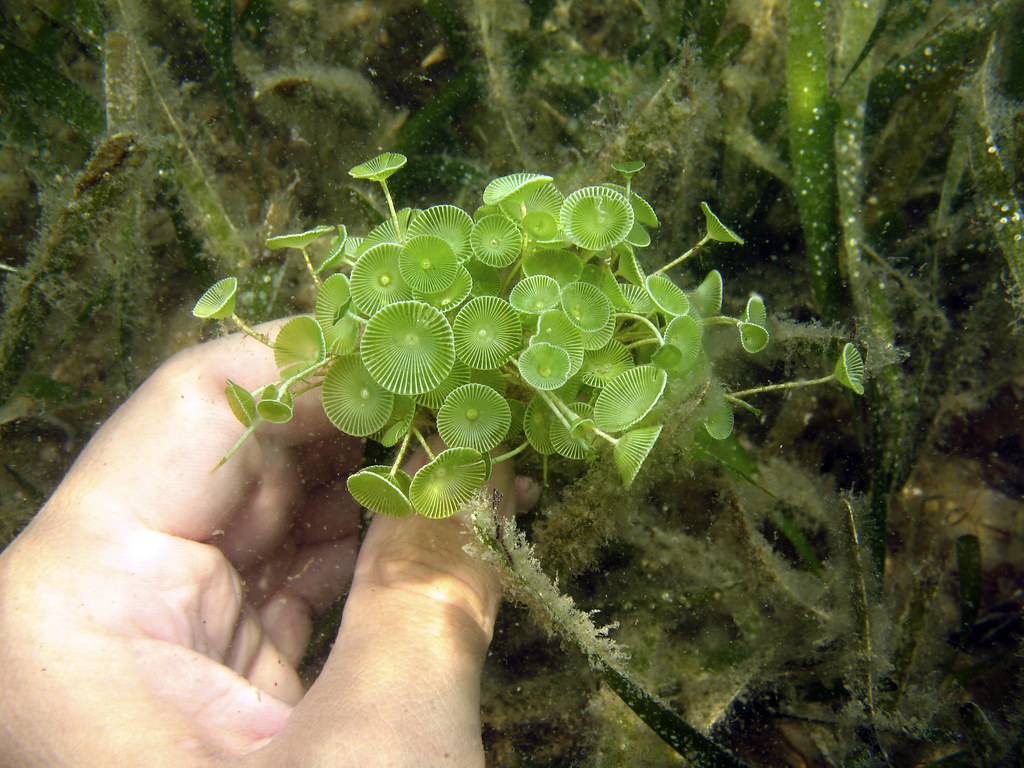Mermaid’s Wine Glasses
There will always be an exception to the rule. As a general rule of thumb, individual cells require a microscope to be seen. This is where Acetabularia comes in. These single-celled organisms – sometimes called “Mermaid’s wine glasses” – can grow up to about 10 cm tall. They are comprised of 3 main sections from bottom to top; root-like rhizoids (“feet”), a thin and long stalk, and a “cap” of branches that may be fused or not depending on the species. The nucleus is located at the bottom of the stalk or in the foot. This fact was crucial to research done by Joachim Hammerling.
 |
| Acetabularia mediterranea |
Hammerling used Acetabularia mediterranea (A. mediterranea) as well as Acetabularia crenulata (A. crenulata) in his experiment. The morphology of A. mediterranea is such that the branches of the cap are fused together forming a bowl shape, whereas the branches of A. crenulata are not fused and create a look similar to that of a flower. The feet of each species were cut off and fused to each other’s stalk + cap types. Then, the caps of each were cut off. The first time, the cap types that grew back were paired with the stalk type that they grew on since the appropriate proteins remained in the cytoplasm of the stalks. The caps were again cut off and grew back such that they were paired with the foot types because of the presence of the nucleus. Through this experiment, Hammerling discovered that the nucleus is what controls the cell.
Acetabularia played an important role in this discovery. They were an excellent choice because the entire cell can easily be seen by the naked human eye and can be handled by the human hand. The plainly visible difference in cap morphologies allowed researchers to easily determine which morphology the cell was adhering to once the nuclei were swapped between cell types.
Source 1: https://www.britannica.com/science/Acetabularia
Source 2: http://www.accessexcellence.org/RC/VL/GG/hammerling_s.html
Posted by Natasha Dalton (1)
This is extremely interesting! I would have never imagined to be able to see a cell without a microscope, and especially not in the form of a plant. I wonder if this species was ever used to test out biological hypothesis in fields other than plant biology? And if so, does it have the characteristics of other model species, such as drosophila, that are often used for their easy upkeep?
ReplyDelete- Rund Tawfiq (3)
I am having a hard time imagining something of that size being one cell! That is amazing, nature can be very interesting. The feet, stalk and cap are all part of one cell? Does this cell share the same characteristics with the rest of the eukaryotic cells?
ReplyDeletePosted by Sarah Kamukala
It's amazing how something that can grow up to 10cm is only a single-celled organism! Is it rare to find that the nucleus controls the cell? What are the use of these Mermaid wine glasses?
ReplyDelete-Catherine Tsang (3)
I think this is awesome, especially because it is from a single celled organism. Since this is a single celled organism will it share common characteristics as eukaryotic cells or does it have its own specific characteristics? Can these be found anywhere or are they only in a specific place?
ReplyDelete-Tatiana Silveira (3)